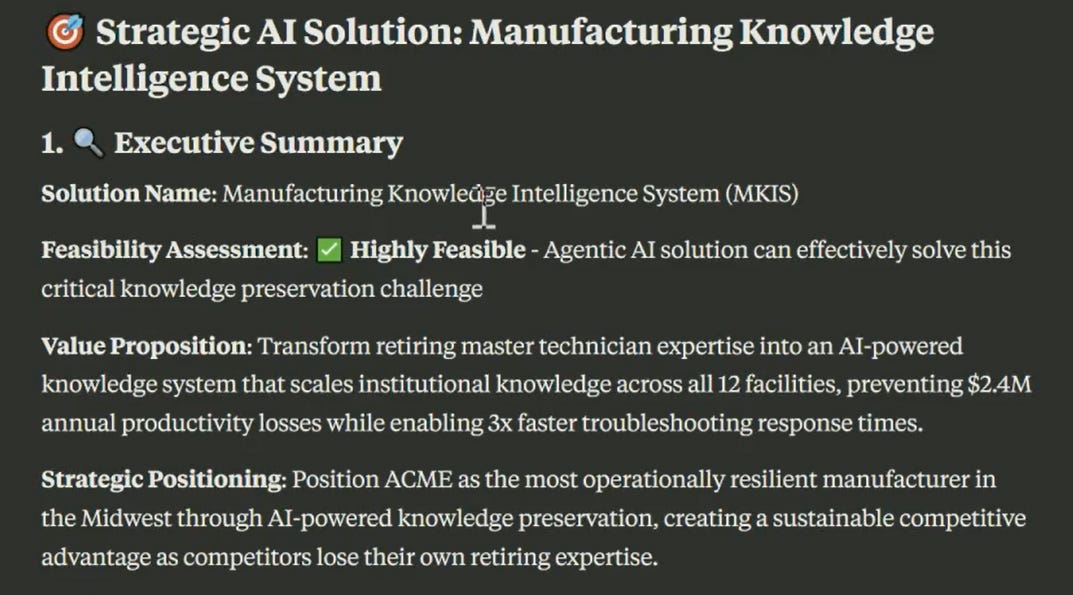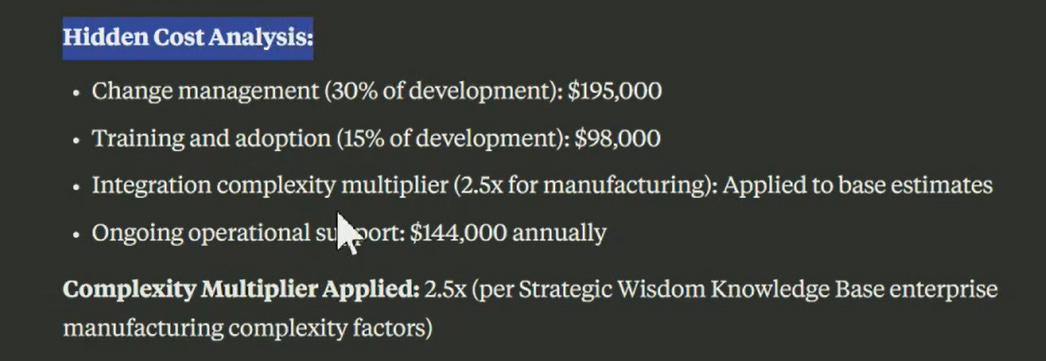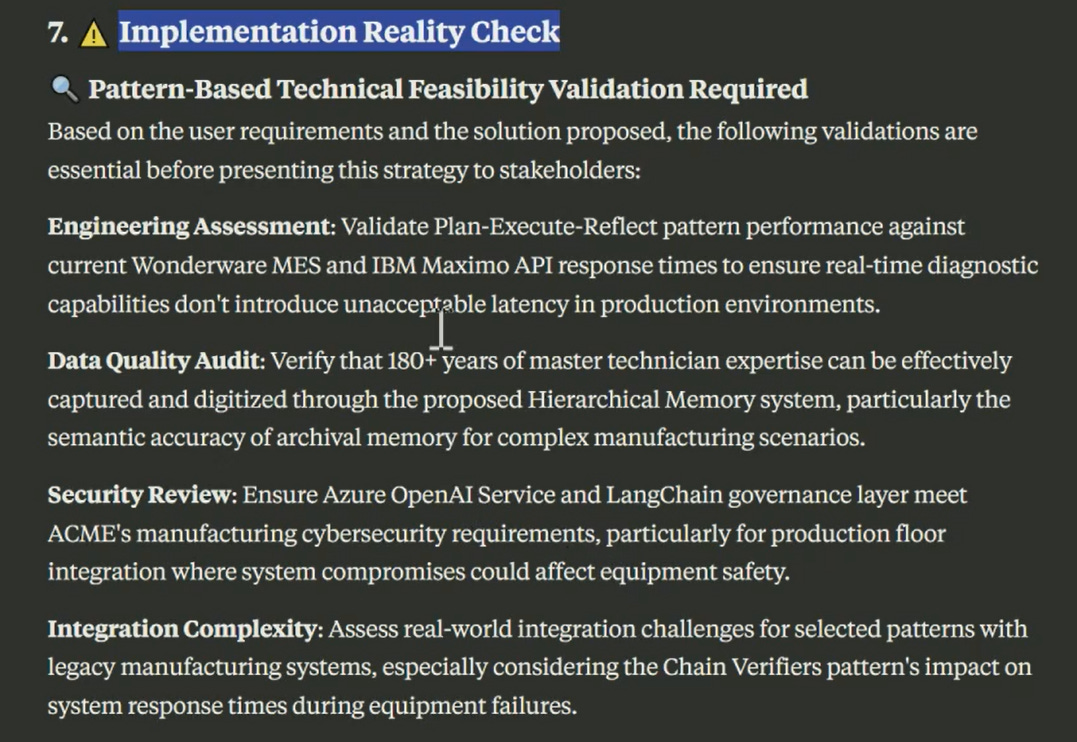Why Your AI Agent ROI Looks Fake to Executives - And What to Do Instead
Stop selling cost reduction. Start selling capability amplification.
Here's what's happening in organisations around the world today…
Someone gets excited about AI agents, cobbles together a business case promising to "reduce headcount by 30%" or "automate routine tasks," and then wonders why leadership looks uncomfortable.
If you've ever pitched an AI agent project and gotten blank stares or hostile questions, you're not alone.
The problem isn't the agents. It's the pitch.
Most AI agent business cases are written like traditional automation projects—focused on replacing humans and cutting costs. This creates three immediate problems.
First, it makes everyone nervous. Nobody wants to be the executive who approved the "job-cutting AI project."
Second, it dramatically undervalues the opportunity. When you focus only on cost savings, you're capturing maybe 30% of the actual value.
Third, it sets you up for failure. Cost-reduction projects get scrutinized differently than growth projects—every implementation hiccup becomes a reason to pull the plug.
Today, I'm going to show you exactly how to construct a business case that executives will want to support. But first, let me demonstrate what a systematic approach actually looks like in practice.
The organisations that actually get agent projects approved—and see spectacular returns—think differently. They understand that agents aren't about replacing humans; they're about making humans more valuable.
This is where the JUSTIFY framework comes in...
The Core Insight That Changes Everything
If you watched the demonstration above, you noticed something important: I didn't start by calculating how many jobs the manufacturing knowledge system would eliminate. Instead, it focused on what the organisation could achieve when senior expertise became scalable and accessible.
That's not an accident. It's the fundamental shift that separates successful AI agent proposals from those that get rejected.
The organisations that actually get agent projects approved think differently.
They understand that agents aren't about replacing humans; they're about making humans more valuable.
Here's the insight that changes everything - the value isn't in the hours you save; it's in what you do with those hours.
In the manufacturing example, the real value wasn't just reducing troubleshooting time. It was preventing the catastrophic knowledge loss when master technicians retire, enabling junior staff to perform at senior levels, and scaling institutional expertise across 12 facilities simultaneously.
When your sales team stops spending 10 hours a month on client research and starts spending that time on actual client relationships, what's that worth?
When your consultants stop doing routine analysis and start focusing on strategic advisory work, what's the revenue impact?
When your legal team stops drafting standard contracts and starts developing innovative deal structures, how does that change your competitive position?
This is why most AI agent business cases fail. They focus on cost reduction when the real opportunity is capability amplification.
Traditional automation thinking says: "This task costs $100 per hour. AI can do it for $1. We save $99."
Agent thinking says: "This professional spends 10 hours per week on routine tasks. AI can handle those tasks, freeing up 10 hours for high-value work that generates $X in additional revenue."
The first approach gets you operational savings.
The second approach gets you competitive advantage.
But here's the challenge. Building a credible case for capability amplification requires a systematic approach. You need a framework that addresses every stakeholder concern while building an unassailable case for investment.
That's exactly what the JUSTIFY framework if for.
The JUSTIFY Framework: Your Roadmap to Approval
The JUSTIFY model is a really simple way to break your opportunity down into seven interconnected components that address every stakeholder concern whilst building an unassailable case for investment.
J - Justify with Dual Value Streams
What it is
Calculate both direct cost savings AND the revenue potential of freed-up professional time.
Video example
I calculated $2.4 million in annual savings, but the real value was preventing knowledge loss from retiring master technicians—protecting operational continuity worth far more than the direct efficiency gains.
Stop thinking about AI agents as a cost play. Start thinking about them as a growth multiplier.
Value Stream 1 - Direct Efficiency Gains
This is the obvious bit—the money you save by automating routine tasks. Calculate this by identifying how many hours per month your professionals spend on repeatable expertise tasks, then multiply by their fully-loaded hourly cost.
Value Stream 2 - Capacity Monetisation
This is where the real money lies.
When you free up professional time, you're creating capacity for higher-value work. Additional client interactions, new business development, strategic initiatives—what's the revenue impact?
Value Stream 3 - Scaling Benefits
The long-term value—your enhanced ability to scale without proportional cost increases. Handle increased workload without additional headcount. Enter new markets faster. Create competitive advantages through superior execution.
U - Uncover Latent Capacity Opportunities
What it is
Audit where your professionals actually spend their time to find automation opportunities.
Video example
The system identified that manual troubleshooting was consuming significant expert time, plus 5 of 8 master technicians retiring within 36 months—exactly the capacity analysis needed to justify the investment.
S - Substantiate with Credibility
What it is
Adjust mathematically accurate projections to create believable ROI numbers that executives will actually approve.
Video example
If you can substantiate with math and augment that with judgement based on the real nuts and bolts of an AI agent project, your numbers become more believable.
T - Timeline Implementation and Returns
What it is
Map out when value will actually materialise, not when you hope it will.
Video example
The solution showed a realistic 12+ month timeline from investigation through deployment, acknowledging that agent projects require experimentation and iteration—not immediate deployment.
To completion, you should’t really be thinking of going from initiation to deployment in less than 12 months.
I - Identify Risks and Mitigation Strategies
What it is
Address what could go wrong and how you'll handle it before executives ask.
Video example
I included governance requirements, compliance considerations, and integration complexity analysis. This shows awareness about real implementation challenges. It also applied a Reality Check - assumptions can only take you so far.
F - Frame for Different Stakeholder Audiences
What it is
Tailor your message to speak each decision-maker's language and priorities.
Video example
For CFOs, focus on ROI, payback periods, and financial risk management.
For CEOs, emphasise competitive advantage and scaling capabilities.
For operational leaders, highlight productivity improvements and quality metrics. For technology leadership, address technical feasibility and integration requirements.
Y - Yield Measurable Success Criteria
What it is
Define clear, measurable outcomes that prove the project succeeded or failed.
Video example
Give clear financial analysis, and make sure your numbers are conservative and grounded in well validated assumptions, either against customer context or against industry benchmarks.
Making It Happen: From Framework to Approval
The JUSTIFY framework isn't just theory—it's exactly what you witnessed working in the 18-minute demonstration above. But here's what separates success from failure. You have to actually do the work.
If you only takeaway five things from today, it’d be good if it was these.
Start With the Capacity Audit
Most people skip straight to promising savings without understanding where time is really spent. Don't guess—audit. The manufacturing example worked because it identified specific, measurable capacity constraints (retiring technicians, manual troubleshooting time) rather than making vague efficiency claims.
Lead With Capability Amplification
Remember the core insight: you're not pitching a cost-cutting exercise, you're proposing a capability upgrade. The video showed this perfectly—the value wasn't eliminating jobs, it was preserving and scaling institutional expertise.
Make Your Numbers Believable
As demonstrated in the financial credibility section, mathematically accurate ROI projections often trigger executive skepticism. Apply realistic factors for change management, training, and integration complexity. Better to promise 150% ROI and deliver 200% than promise 500% and lose credibility immediately.
Address Risks Before They're Asked
Every executive is thinking: "What could go wrong?" The demonstration showed risk thinking—governance requirements, compliance considerations, integration challenges. Address these proactively, don't wait for hostile questions.
Remember: This Is About Competitive Advantage
AI agent projects succeed when executives see them as strategic investments, not operational optimisations. The manufacturing scenario wasn't just about efficiency—it was about maintaining competitive capabilities that competitors couldn't easily replicate, which was all about their people!
The organisations getting agent projects approved aren't just promising to do things cheaper. They're promising to do things that were previously impossible.
Until the next one,
Chris









Hi Chris, thanks a lot for just another really valuable article. I have a question about DealPrompt. Is it 2nd or more complex edition of Template prompt you introduced to your AI agent toolkit? Thanks in advance for your response and have a nice weekend.